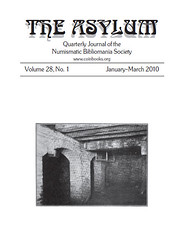
About UsThe Numismatic Bibliomania Society is a non-profit organization promoting numismatic literature. For more information please see our web site at coinbooks.org SubscriptionsThose wishing to become new E-Sylum subscribers (or wishing to Unsubscribe) can go to the following web page link MembershipThere is a membership application available on the web site Membership Application To join, print the application and return it with your check to the address printed on the application. Membership is only $15 to addresses in the U.S., $20 for First Class mail, and $25 elsewhere. For those without web access, write to: David M. Sundman, Secretary/TreasurerNumismatic Bibliomania
Society AsylumFor Asylum mailing address changes and other membership questions, contact David at this email address: dsundman@LittletonCoin.com SubmissionsTo submit items for publication in The E-Sylum, just Reply to this message, or write to the Editor at this address: whomren@coinlibrary.com
BUY THE BOOK BEFORE THE COINYou won't regret it! |
- WAYNE'S WORDS: THE E-SYLUM MAY 23, 2010
- THE ASYLUM JANUARY–MARCH 2010 (VOLUME 28, NO. 1)
- ANA CONVENTION EXHIBIT APPLICATIONS DUE JULY 1, 2010
- MASSACHUSETTS HISTORICAL SOCIETY PLANS ANA NUMISMATIC EXHIBIT
- HELP RESTORE COLOGNE'S NUMISMATIC PAPERS AND DOCUMENTS
- DIX NOONAN WEBB DAVID GRIFFITHS REFERENCE LIBRARY SALE JUNE 16, 2010
- KUENKER NUMISMATIC LITERATURE SALE JUNE 21, 2010
- BANK OF CANADA NATIONAL CURRENCY COLLECTION LITERATURE SALE JUNE 24, 2010
- NEW BOOK: WORLD WAR II FINANCE: CANADA AND NEWFOUNDLAND
- NEW BOOK: COINS HOARDS VOLUME X: GREEK HOARDS
- NEW BOOK: DUTCH NEW YORK
- NEW EDITION: STANDARD CATALOG OF WORLD PAPER MONEY MODERN ISSUES
- NEW BOOK: PORTRAITS OF A PRINCE: COINS, MEDALS AND BANKNOTES OF EDWARD VIII
- BOOK REVIEW: COUNTERFEIT COINS OF ENGLAND: THE BIBLIOGRAPHY
- PIERRE BASTIEN, 1912 - 2010
- MORE ON THE NEW ENGLAND NUMISMATIC AND ARCHAEOLOGICAL SOCIETY PRLS
- LANGE'S MYSTERY NUMISMATIST UNMASKED
- A MYSTERY NUMISMATIC ANIMAL
- HOWARD DANIEL ON NUMISMATIC (AND PHILATELIC) DICTIONARIES
- NUMISMATIC VOCABULARY TERM: WIRE EDGE
- ACCIDENTAL FORTUNE: THE WALTON 1913 NICKEL EPISODE
- NOTES FROM E-SYLUM READERS: MAY 23, 2010
- MORE ON GEORGE W. RODE
- SOCIETY OF MEDALISTS MEDALS OFFERED
- ARTICLE PROFILES ERROR DEALER FRED WEINBERG
- CHINESE COUNTERFEIT COIN DIES, MINTING MACHINERY, AND FAKE COINS
- REPORT: SEX AND BRIBES IN SECURENCY BANKNOTE DEALS
- JACOBS PERKINS PRINTING AND ENGRAVING BUILDING OPENED
- BRITISH LIBRARY TO DIGITIZE THREE CENTURIES OF NEWSPAPERS
- FEATURED WEB SITE: FAKE ANCIENT COIN REPORTS
WAYNE'S WORDS: THE E-SYLUM MAY 23, 2010

Among our new subscribers this week is John Saia. Welcome aboard! We now have 1,341 subscribers.
This week we open with word from Asylum editor David Yoon on the latest issue, which will soon be on the way to NBS members. Next are announcements and reminders related to events at the upcoming ANA convention.
Numismatic literature sales are occurring worldwide - next up are announcements of sales in London, Germany and Canada. As if that's not enough for one week, we also have announcements and reviews of several new and recent numismatic books and catalogs.
Other topics this week include New England Numismatic and Archeological Society publications, Dave Lange's mystery numismatist, Pierre Bastien and error coin dealer Fred Weinberg.
All numismatists and numismatic bibliophiles should take note of a plea for contributions to help save numismatically valuable manuscripts badly damaged in the collapse of the Cologne City Archive last year.
To learn about Dutch New York numismatics, the filming of the "Accidental Fortune" segment on the 1913 Liberty Nickel, wire edges, Philadelphia dealer S.K. Harzfeld's postcards, banknote company prostitutes, and a plan to digitize 300 years worth of newspapers, read on. Have a great week, everyone!
Wayne Homren
Numismatic Bibliomania Society
THE ASYLUM JANUARY–MARCH 2010 (VOLUME 28, NO. 1)
- Joel Orosz and Leonard Augsburger - Frank H. Stewart's Small Beginnings: Ye Olde Mint and Our New Home and Old Times
- Myron Xenos - "You Don't Say": Numismatic Quarterly Quiz
- Harvey Stack - The Stack Family Library Sale
- Jeffrey LaPlante - The Millard Fillmore Presidential Dollar Coin Launch, Moravia, New York
- François de Callataÿ - Book Review: The Rebirth of Antiquity: Numismatics, Archaeology, and Classical Studies in the Culture of the Renaissance, edited by Alan M. Stahl
Remember, although The E-Sylum is free to all, only paid members of the Numismatic Bibliomania Society review The Asylum.
ANA CONVENTION EXHIBIT APPLICATIONS DUE JULY 1, 2010
IMPORTANT REMINDER: Exhibit applications for the American Numismatic Association's 2010 ANA World's Fair of Money, Boston – August 10 - 14 are due by July 1, 2010. The next few weeks are crucial for E-Sylum readers wishing to set up a display of numismatic literature at the convention.
We've had some great literature exhibits at past conventions. The Numismatic Bibliomania Society endowed the exhibit category with a $3,000 donation to the ANA. Let's have a great selection of exhibits this year!
There is no end to the number and type of exhibits that could be entered. Here are a few random ideas:
- Catalogs of great Boston Collections
- Numismatic Books by New England Authors
- Literature of Colonial-Era Numismatics
- Literature of the U.S. Mints
- The Top Ten Greatest Items of American Numismatic Literature
- ????
For an exhibit application, see:
www.worldsfairofmoney.com/assets/files/Exhibits
/Exh%20Applicationfinal%20050310.pdf
By the way, the convention is a GREAT time to take the ANA Judge's Certification program. It's a great way to learn how exhibits are judged, and that can only help make you a better exhibitor. I did it one year, and I'm glad I did. For more information, contact Sam Deep at DeepSam@aol.com .
For links to exhibit rules and the judging schedule, see www.worldsfairofmoney.com/index.php?id=55
MASSACHUSETTS HISTORICAL SOCIETY PLANS ANA NUMISMATIC EXHIBIT
Speaking of exhibits, Anne Bentley of the Massachusetts Historical Society writes:
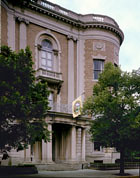 We're planning a knock-your-socks off exhibition for the summer with most, if not all, of our unique items and a host of other pieces. John Adams is curating with me, so the full Washington-Webster Comitia set will be on display, along with Vernon material to tie in with the new book.
We're planning a knock-your-socks off exhibition for the summer with most, if not all, of our unique items and a host of other pieces. John Adams is curating with me, so the full Washington-Webster Comitia set will be on display, along with Vernon material to tie in with the new book.
Of course we won't forget the coin/currency collectors: the NE pieces, 1690 note and 1776 Mass. Pine Tree copper penny will also be displayed. Stay tuned to the A.N.A. website and The Numismatist July issue for more details. Coin World is also working on some informative features.
"Precious Metals: from Au to Zn" at the Massachusetts Historical Society, 1154 Boylston Street (3 blocks west of the Hynes Center) from August 2 through September 11, 2010; public hours Monday-Saturday 1-4 P.M. Special additional A.N.A. morning hours August 10-14 from 9-noon
For more information, see: www.masshist.org
HELP RESTORE COLOGNE'S NUMISMATIC PAPERS AND DOCUMENTS
Ursula Kampmann, Editor of CoinsWeekly writes:
We have started a campaign, called "Coin Collectors for Cologne" in cooperation with the Civic Archive of Cologne. The aim is to ask coin collectors all over the world to help financing the cost of restoring the numismatic papers and documents, which have been damaged during the break-down of the archive.
I would be happy, if you supported this campaign. And there are two good reasons for it:
1.) The numismatic sources have certainly not priority, when public funds pay for the restoration. This means that the precious material won't be available for scholars, if we do not take action.
2.) A successful campaign uniting coin collectors and coin dealers all over the world will give us the opportunity to demonstrate to all of our critics, that coin collectors are willing to protect cultural property.
If you want to get more details on the campaign, please read the press release attached and visit CoinsWeekly at Coin collectors for Cologne (www.coinsweekly.com/en/Archive/8?&id=150&type=n)
Please help to save numismatically valuable manuscripts
About one year ago, horrible pictures spread through the media after the collapse of the Cologne City Archive on March 3rd, 2009. It was a disaster for the protection of cultural heritage. In the biggest municipal archive north of the Alps were roughly 65.000 valuable records and documents stored – from as early as 922 until the present day. Indifference and sloppiness seemed to have destroyed that precious heritage of mankind.
Today, about a year later, we know that 85% of the archive materials were rescued. But they are in a terrible state. After all they were exposed to parts of the building that came crashing down and extinguishing water. At present the valuable objects are stored in a refrigerator being shock-frozen and wait to be restored. It will surely take decades, and the restoration will cost several hundreds of millions of Euros.
Cologne's numismatic collections
In Cologne not only imperial records and literary remains of writers were stored but numerous sources on numismatics as well. In the Early and High Middle Ages Cologne was one of the most important trade centres in Europe and hence the inventories are of greatest interest to European numismatics. Inventory “90” (trade) alone contains more than 100 files and office books from the Late Middle Ages and Early Modern Times devoted to coinage. In total, the economic-numismatic section spans more than 40 metres of shelve including the inventories of the Hanseatic League and the European long-distance trade. Of course, the numismatic sources are far from being the top priority for any restoration. This is where private initiative is called for.
Coin collectors as the true custodians of cultural assets!
Collectors all around the world, let's show that true protection of cultural heritage is near and dear to us! Let's assume responsibility for our common past across all borders! Share the costs of the restoration of numismatic objects!
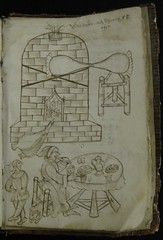 As a first project, the persons responsible in the Cologne City Archive have chosen a Münzwardein book from the 15th century that needs moderate restoration (Inv. 90, no. 959). The book is a typical functional script on paper that provides an actual insight into the methods of a Münzwardein. For its restoration 2.500 Euros are necessary.
As a first project, the persons responsible in the Cologne City Archive have chosen a Münzwardein book from the 15th century that needs moderate restoration (Inv. 90, no. 959). The book is a typical functional script on paper that provides an actual insight into the methods of a Münzwardein. For its restoration 2.500 Euros are necessary.
Please help to save the present source plus many more and donate money to cover the expenses. Dr Max Plassmann of the Historical Archive Cologne has assured us that every object whose restoration is funded by coin collectors will carry the additional remark „Restauriert mit Hilfe der Aktion „Münzensammler für Köln“
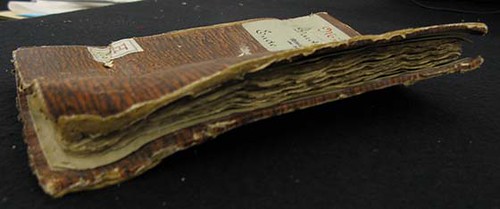
The remains of a Cologne Münzwardein book from the 15th century.
More information on this initiative is available on the internet at http://www.coinsweekly.com/en/Archive/8?&id=150&type=n
These are the account details: Account holder: Freunde des Historischen Archivs der Stadt Köln e.V.; Account number: 19 00 45 89 59; Bank code: 370 501 98; Sparkasse KölnBonn.
It is of vital importance to fill in the reference with "Patenschaft Münzwardeinbuch" to make sure that your donation will be used for a specific purpose.
DIX NOONAN WEBB DAVID GRIFFITHS REFERENCE LIBRARY SALE JUNE 16, 2010
Peter Preston-Morley of Dix Noonan Webb in London writes:
There is some numismatic literature in our forthcoming auction in London on June 16th. This includes the first tranche of books from the David Griffiths reference library and features a complete run of the British Numismatic Journal from 1904 to 1988, an excellent copy of the best edition of Camden's Britannia and a virtually complete run of Spink's Numismatic Circular from 1892 to 1983.
The books on British trade tokens which form an important element of the Griffiths library will be offered in London on October 6th.
For more information, see: Dix Noonan Webb Coin and Numismatic Literature Auctions (www.dnw.co.uk/coins/auctions/rostrumauctions/)
KUENKER NUMISMATIC LITERATURE SALE JUNE 21, 2010
Douglas Saville writes:
Bernard's library was formed over many years, and he summarizes it nicely in his Introduction to the catalogue.
Many of the major works are in really nice condition, and there are some fine association items, such as the superb Poey d'Avant from the Ponton d'Amecourt library, and a wonderful set of Babelon's Traite.
Over the many years that I have known Bernard, since the mid 1970s, whenever I visited Paris I would call on him and try to convince him to sell me (when I was at Spinks) his library - never successful, I fear.... so, he has now decided to sell a major part of it - but not all of it, since he still has a fine library at home that he still uses........as he says in the catalogue.
His part of the sale is strong in Greek, Roman, French numismatics and Medallions, and some antiquarian works - he has a fine set of the rather rare Mongez/Visconti (lot 143) and also, quite unusually for a numismatic library sale, it includes works on Bibliography - since Bernard is, quite apart from being a professional numismatist, at heart, a true bibliophile, a real collector with a passion for books.
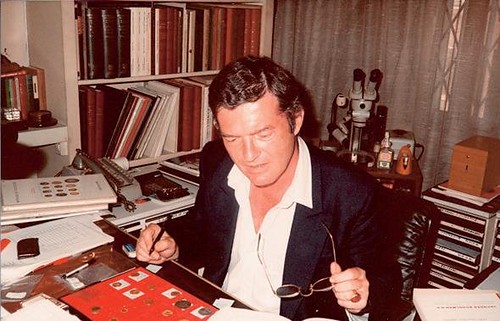
As I will be 75 years old next month, this picture does not show me as I am today but I chose it because many of my colleagues and clients will find it easier to recognize me.
By the time it was taken, in France, it was said that in numismatics there was God the Father, the Son and the Holy Spirit. Jean VINCHON, who had been a professional numismatist since the Liberation of Paris in 1945 and had done much to promote numismatics, was God the Father. I, who had used other methods of promotion, such as television and the creation of 2 numismatic reviews, was God the Son while our much estimated colleague, Emile BOURGEY, who was also very efficient in a more discreet fashion, was known as the Holy Spirit.
In 1964 or 65, I was lucky enough to be invited to appear on a prime time television show called “Avis aux Amateurs” (“Take note, Enthusiasts”) produced by SABBAGH and FOLGOAS and broadcast live on the only national TV channel available at the time. With over 1.200 letters received I had beaten the record for the show.
It took me over 15 months to answer them all and the writers of these letters formed the basis of my first customer database. I then decided to sell the insurance consultancy I had founded and, in September 1967, I opened my first numismatic shop - thus devoting myself to my passion for History and Art.
During the following years, I published an important number of auction catalogues and my professional success enabled me to buy numismatic books, first on Roman and French coins, then on Greek coins and, finally, on all the important numismatic topics including medals and tokens. My fondness for books was such that I had most of them bound by one of the best book-binders in France.
These are the books that are being auctioned and if the title of the catalogue is “The Library of Bernard Poindessault – Part I” it is because I had continued thinking like an insurance broker, “an insurance premium is expensive until the accident occurs”, which is why, just in case my office were to burn down, I had bought two examples of all the important books. As I had got used to working at home in the mornings to catalog coins, this “second” library became nearly as important as the one in the office. As we still refer to these books, they will most certainly not be sold before my death.
Among the numismatic books to be auctioned, some are in such exceptional condition that I hesitated to part with them. To mention only two, there is the magnificent copy of the POEY d'AVANT from the library of the Vicomte PONTON d'AMECOURT and the leather-bound “Traité des Monnaies Grecques et Romaines” by Ernest BABELON, which is extremely rare when complete.
The other books of this sale come from the ancient numismatic and historical book department I had created in my offices, rue de Richelieu, which business was run by Josiane VEDRINES. This subsidiary having been accepted as a member of the SLAM “Syndicat de la Librairie Ancienne et Moderne” (the French trade association of antique book dealers), I attended the General Assembly that followed and, because of my comments during this assembly, its president, Pierre BERES, the most famous antiquarian book dealer in France at the time asked me to become a member of the committee of the SLAM at which time I was already president of the SNENNP (Syndicat National des Experts Numismates et Numismates Professionnels), the French numismatic trade association.
In the 1980's, we published several book catalogues and, at the time, our main “competitors” were: Douglas SAVILLE in charge of SPINK's book department in the splendid building they had in King Street, David EDMUNDS in charge at SEABY's and George KOLBE in the United States. We have kept in touch with Douglas for the past 30 years and that is why I wanted him to be the co-expert for this sale.
You now know the origins of this two-fold library: not only is it the library of a professional numismatist but also that of an antiquarian book dealer.

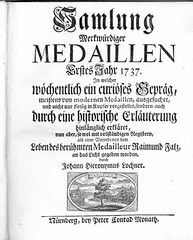
For more information, see:
KUENKER AUCTION CATALOGUES IN PDF FORMAT
(www.kuenker.de/detail_html.asp?nid=147&lid=1&d=
\images\download\pdfauktion\Auktion-Auction-169)
Kolbe & Fanning will attend Fritz Rudolf Künker's June 21, 2010 Auction Sale 169 in Osnabrück, Germany, featuring the fine numismatic libraries of Hanfried Bendig and Bernard Poindessault.
This noteworthy public auction sale features over 2000 lots of works on ancient coins and on a wide variety of medieval and modern numismatic topics. Many of the works in the sale are very important and are seldom offered for sale.
If you are interested in being personally represented at the sale, please contact George Kolbe by telephone: (909) 338-6527; or by email: GFK@numislit.com. Advice on values and desirability will gladly be provided and those lots of interest in the sale will be viewed beforehand. A commission of 5% of the hammer price of successful purchases will be charged for our services.
A limited number of printed sale catalogues will be available to those not on the Künker mailing list. We will be happy to send copies to interested parties while our supply lasts.
BANK OF CANADA NATIONAL CURRENCY COLLECTION LITERATURE SALE JUNE 24, 2010
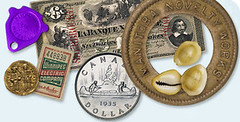 Moore Numismatic Auctions (MOORE'S) has been selected by the Bank of Canada to sell by public auction duplicate numismatic literature and other related written or printed material from the Bank's National Currency Collection library. The sale will take place as a separate session at 1:00 o'clock on June 24, 2010 in conjunction with the summer TOREX coin show, held at the Hilton Toronto Airport Hotel, Mississauga, Ontario. The literature to be offered consists of nearly one thousand reference books, auction catalogues, journals, periodicals and other numismatic and related works with content ranging from Ancient Greek and Roman to World and of course Canadian coins, tokens, medals and paper money.
Moore Numismatic Auctions (MOORE'S) has been selected by the Bank of Canada to sell by public auction duplicate numismatic literature and other related written or printed material from the Bank's National Currency Collection library. The sale will take place as a separate session at 1:00 o'clock on June 24, 2010 in conjunction with the summer TOREX coin show, held at the Hilton Toronto Airport Hotel, Mississauga, Ontario. The literature to be offered consists of nearly one thousand reference books, auction catalogues, journals, periodicals and other numismatic and related works with content ranging from Ancient Greek and Roman to World and of course Canadian coins, tokens, medals and paper money.
Many of the books and other literature has been pedigreed to well known Canadian numismatists, including J. Douglas Ferguson, Fred Bowman, Alfred Petrie and others. A number of the works have various dedications, bookplates and stamps attesting to the pedigrees.
All of the 490 lots will be sold without reserve.
Although MOORE's has conducted over one hundred and twenty numismatic auction sales in Canada since 1977, this is the first to feature extensive numismatic literature.
A PDF of the sale will be available from Charles Moore, P.O. Box 5233, Walnut Creek, CA., 94596. (925)-946-0150 Fax (925)-930-7710 e-mail: moorecoins1921@yahoo.com. The public auction will also be live on i-collector.com.
NEW BOOK: WORLD WAR II FINANCE: CANADA AND NEWFOUNDLAND
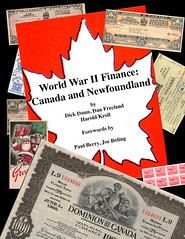 World War II finance and the various issues available for collectors are a little-known, but growing, area of interest for collectors. For Canada and Newfoundland a new book helps collectors with what the authors rightly call a very complex group of issues.
World War II finance and the various issues available for collectors are a little-known, but growing, area of interest for collectors. For Canada and Newfoundland a new book helps collectors with what the authors rightly call a very complex group of issues.
Canada issued war savings certificates (in many varieties), war bonds, and victory loan bonds. Furthermore, nine separate loan drives were held. Each drive had a unique issue of Victory Loan Bonds and these bonds could be bearer or registered instruments!
The Canadian War Savings Certificates are equally complex. They had two major conditions of issue, two different printers, three major design types and many varieties and sub-varieties. The certificates were supplemented with the sale of war savings stamps.
Newfoundland War Savings Certificates were issued in $3, $6, $12, $30 and $60 denominations. While these denominations sound strange, they allowed for more convenient purchase prices ($2.50, $5, $10, $25, and $50)! These certificates are replete with two signature varieties and several paper varieties.
Newfoundland issued war bonds. This had not previously been reported in any numismatic source. A bond prospectus illustrated in the book proves that they were issued, but no bonds have been reported in collection according to the authors. Many of the Canadian War and Victory Bonds listed are also not reported in any collection leaving many research opportunities for collectors.
The book is full color throughout with more than 220 images in forty-eight pages of the many interesting numismatic emissions and related items. The book is by Dick Dunn (Ontario), Dan Freeland (Michigan), and Harold Kroll (Alabama). All three are serious collectors of this material.
There is something for just about every collector--plenty to read and study and a stunning array of images. Furthermore every single page has information that has never before been published and even information that has previously been published (1995) is updated with new material.
Two forewords are included that provide insights from two very different perspectives. Paul Berry, Chief Curator, Currency Museum, Bank of Canada, speaks from the view of his professional position. Among many other things, he points out that building a collection of Canadian World War II bonds because of the variety of issues and the complexity of the series is a very challenging task.
Joe Boling is a governor of the American Numismatic Association and past president of the International Bank Note Society, Most importantly with respect to this project, he is also author and editor of World War II Remembered which was the first book to list any of the items that are now listed in the current book. His foreword describes the trials, tribulations, process, and even triumphs of studying and cataloging the various issues in 1993.
The book was released at MPCFest XI on April 17 where all three authors and Joe Boling were present to sign autographs.
The book is available from the publisher at $16 or $50 for a collector's edition both postpaid to Canada or the US. The collector's edition includes a basic copy for daily use and a special edition with autographs of all five authors (Dunn, Freeland, Kroll, Barry, and Joe Boling), first day of issue stamp and an actual war bond coupon mounted (nondestructively) on the title page. Contact BNR Press, 132 E. Second Street, Port Clinton, Ohio 43452 or (preferably) fredschwan@yahoo.com (PayPal payment accepted at this address as well).
NEW BOOK: COINS HOARDS VOLUME X: GREEK HOARDS
 Pre-publication Sale
Pre-publication Sale
"Coin Hoards X" edited by Oliver Hoover, Andrew Meadows, and Ute Wartenberg Kagan is again focused on ancient Greek coinage. The inventory contains records of 471 new hoards or re-evaluations of old ones, and provides an indispensable supplement to the Inventory of Greek Coin Hoards and previous volumes of Coin Hoards. Ten articles are devoted to the full publication of a series of important new hoards related to the coinage of the Seleucid Empire, and are accompanied by 67 illustrative plates.
Orders received by July 15, 2010 will receive the drastically reduced pre-publication price of $50 (regularly $80). Order online or download a printable order form now at www.numismatics.org/Store/CoinHoardsX .
NEW BOOK: DUTCH NEW YORK
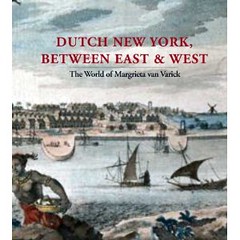 New York Historical Society and Bard Graduate Center exhibition "Dutch New York Between East and West: The World of Margrieta van Varick" has won the 2009 First Runner-up prize in the annual Association of Art Museum Curators' (AAMC) Awards for Excellence in the Outstanding Exhibition Catalogue category. Congratulations to ANS Curator of North American Coins and Currency Mr. Robert Hoge who planned and wrote the numismatic section of this exhibition and catalog.
New York Historical Society and Bard Graduate Center exhibition "Dutch New York Between East and West: The World of Margrieta van Varick" has won the 2009 First Runner-up prize in the annual Association of Art Museum Curators' (AAMC) Awards for Excellence in the Outstanding Exhibition Catalogue category. Congratulations to ANS Curator of North American Coins and Currency Mr. Robert Hoge who planned and wrote the numismatic section of this exhibition and catalog.
An amazing exhibition and catalog for anyone interested in Colonial numismatics and the historical context of late-seventeenth century New York's position in international trade and culture. Purchase the catalog online using the link below and a portion of the proceeds will go to support ANS programs.
To purchase the catalog on Amazon, see: Dutch New York, between East and West: The World of Margrieta van Varick
NEW EDITION: STANDARD CATALOG OF WORLD PAPER MONEY MODERN ISSUES
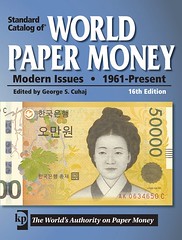 The new edition of the Standard Catalog of World Paper Money Modern Issues, 1961-Present has been released by Krause Publications.
The new edition of the Standard Catalog of World Paper Money Modern Issues, 1961-Present has been released by Krause Publications.
As the largest and most comprehensive English language guide to world bank notes issued between 1961 to the present, this 1,112-page book serves a segment of the numismatic hobby which continues to grow in popularity and market activity. This 16th edition features new listings and items that reflect recent developments and new varieties and discoveries.
"The expanded listings, updated pricing and quality photos make this the must-have reference for world paper money," said editor George S. Cuhaj. "Each year, collectors eagerly anticipate the release of this book, and the 16th edition will not disappoint them."
With more than 20,000 listings, pricing in two grade values, 12,000 clear illustrations of bank notes and several appendices to assist with language conversion and grading, this is the one stop resource to the modern paper money market.
For more information visit
www.shopnumismaster.com/product/
standard-catalog-of-modern-issue-paper-money-16thed/world-paper-money
.
NEW BOOK: PORTRAITS OF A PRINCE: COINS, MEDALS AND BANKNOTES OF EDWARD VIII
Coins, Medals and Banknotes of
Edward VIII
By Joseph S. Giordano Jr.
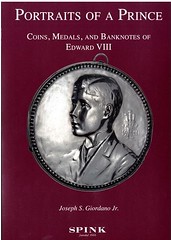 This publication, which is the most comprehensive listing ever published of Currency Coins and Paper Money, Medals, Patterns, Trial Pieces and Badges of Edward VIII, is the result of 25 passionate years of collecting, research and writing by the author, Joseph Giordano Jr., a native of New York.
This publication, which is the most comprehensive listing ever published of Currency Coins and Paper Money, Medals, Patterns, Trial Pieces and Badges of Edward VIII, is the result of 25 passionate years of collecting, research and writing by the author, Joseph Giordano Jr., a native of New York.
This work is truly comprehensive in its coverage, dealing with Investiture, Coronation, Jubilee, Abdication, Royal visits and Prize medals along with many others including retrospective pieces. Contemporary currency of the UK and Dominions including patterns and trials are covered together with paper money, badges and fantasy pieces.
A rarity index is included to provide some idea of the scarcity, in real terms, of the pieces together with a price range for each piece in US$. Nearly every piece is illustrated and there are numerous further illustrations of King Edward VIII at various stages of his life.
Quarto, 704 pages, fully illustrated with values in US$. Casebound. £49.50
Catherine Gathercole
Book Department
Spink
69 Southampton Row
London WC1B 4ET
Tel : 020 7563 4046
Fax: 020 7563 4066
www.spink.com
BOOK REVIEW: COUNTERFEIT COINS OF ENGLAND: THE BIBLIOGRAPHY
 At my request Ken Peters sent me a copy of his 2008 book, Counterfeit Coins of England and the United Kingdom: The Bibliography and Individual Counterfeits' Record.
At my request Ken Peters sent me a copy of his 2008 book, Counterfeit Coins of England and the United Kingdom: The Bibliography and Individual Counterfeits' Record.
Any bibliography is fair game for The E-Sylum, and specialized bibliographies are especially welcome. General bibliographies by their very nature are rather broad but shallow; in a specialized bibliography an author can "go deep", creating a comprehensive view of the field.
While I'm not versed in the literature of English counterfeits, it appears that Ken Peters has succeeded in this task. The book is the first comprehensive source book on the topic, "from the earliest, including those coming in from the continent, c. 150 B.C, to the current one pound fakes."
The 176-page reference is organized chronologically, with additional chapters on Significant Forgers, Internet Browsing, and Book Hunting. Also included are a Glossary, Index, Authors' Index and list of Abbreviations.
A good bibliography doesn't stop with just books and catalogs - it includes significant individual journal articles. Peters' bibliography includes these in a big way, drawing from such venerable journals as Seaby's Coin and Medal Bulletin, Spink's Numismatic Circular, Numismatic Chronicle and Gentleman's Magazine, as well as many lesser-known publications.
A great bibliography goes beyond its primary field, and I give Peters' book high marks in this regard, as well. There are great many entries for articles and papers published in archeological journals, such as the Birmingham Archeological Society, and Proceedings of the Society of Antiquaries of Newcastle. U.S. numismatists will also find entries from many American publications, such as The ANA's Numismatist, and ANS' Museum Notes and The Colonial Newsletter.
The font is small but quite readable. Although upwards of thirty-some entries are found on each page, titles and key phrases are highlighted in bold or boxed. Many pages include images of book or journal covers as well as coins to break up the visual monotony of text. Most pages are black and white, but there is a center section of four color plates titled "Colourful Counterfeits".
It's a browser's delight as well as a handy deskside companion. The bibliography lists many interesting-sounding books I've not come across before, such as "The Coiners of Cragg Vale", a tale of a "notorious 'bully-boy' gang of clippers and coiners, particularly of Portuguese moidores."
The book costs £25 plus £2.50 p&p. (£4 to Europe, £7 to USA, £8 to the rest of the world). Send payment to ENVOY PUBLICITY, 8 Kings Road, Biggin Hill, Kent, TN16 3XU, England. For more information, contact Ken Peters at kenvoy@hotmail.co.uk .
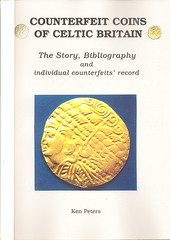 Also, Peters just published Counterfeit Coins of Celtic Britain: The Story, Bibliography and Individual Counterfeits' Record. The book is in the same format as the Bibliography.
Also, Peters just published Counterfeit Coins of Celtic Britain: The Story, Bibliography and Individual Counterfeits' Record. The book is in the same format as the Bibliography.
THE BOOK BAZARRE
PIERRE BASTIEN, 1912 - 2010
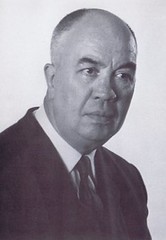
Georges Depeyrot writes:
Pierre Bastien, one of the best numismatists passed away last week. His most famous work was devoted to the Roman mint of Lyon (France) and he organized the "Numismatique Romaine" series of books where many volumes were published.
MORE ON THE NEW ENGLAND NUMISMATIC AND ARCHAEOLOGICAL SOCIETY PRLS
Dave wrote:
I have a set of List of Prices (Realized ) of New York coin sales issued by the New England Numismatic & Archaeological Society, with their logo on page one. I have numbers 1 thru 7. Is this a complete set, or are there more? Could any of the E-Sylum readers help me with this?
The PRL's that I have are
- #1 Cauffman sale 5/3/1871,
- #2 B. Betts sale 6/1/1871,
- #3 Nexsen sale 10/5/1871,
- #4 Clay sale 12/5/1871 (this one was priced at 75 cents, higher than their usual 25 cents)
- #5 Furman sale 12/12/1872
- #6 Haseltine 12/18/1872,
- #7 Bangs Leveridge sale 1/28/1873.
I believe the reason for these was that dealers at that time did not usually issue PRL's. You had to pay them to price a catalog for you. I think this was an attempt to supply sale results at a more reasonable price.
David Stone of Heritage Numismatic Auctions writes:
Regarding Dave Hirt's query on the PRL's published by the New England Numismatic and Archaeological Society, there were at least eight numbers in the series. Number 8 was a PRL for the Chubbuck Sale (Haseltine, 2/1873). As to the purpose of this periodical, NEN&AS hoped it would serve as a price guide for collectors, sort of an early Redbook or Coin Dealer Newsletter. At the end of issue #1 the following explanation was provided:
"Every one who is interested in the study of Numismatology must have felt the need of something to serve as a guide in making purchases of Coins, Medals, etc., either at private sale or at auction.'
"This want the New England Numismatic and Archaeological Society propose to supply by publishing Price Lists of all the important Coin Sales immediately after their occurrence.'
"The prices of these Lists will be twenty-five cents for a list of four pages, and fifty cents for one of eight pages.'
"That the Society may know how large an edition to publish it is important that all who desire these Lists will send their addresses, (accompanied by any suggestions they may be pleased to make,) to Charles Chaplin, Librarian N. E. N. & A. Society, 14 Spring Street, Boston, Mass."
The PRL for the Chubbuck Sale is 13 pages long and is priced at $.75, like the Clay Sale. Apparently interest was not great enough to sustain this project after the first eight issues, although there may be more that I am not familiar with.
To read the earlier E-Sylum article, see: QUERY: NEW ENGLAND NUMISMATIC AND ARCHAEOLOGICAL SOCIETY PRLS (www.coinbooks.org/esylum_v13n19a20.html)
LANGE'S MYSTERY NUMISMATIST UNMASKED
Last week Dave Lange submitted a new mystery numismatist quiz for us. He wrote:
The man in this Christmas photo had a great impact on the hobby of coin collecting in the USA.

With a grin (and copying Ken Bressett), Mark Borckardt writes:
The link dates the image to 1938. Judging from the age, he was probably born in the late 19th century. Is it Ken Bressett?
Pete Smith writes:
I suspect that it will be difficult for most current collectors to identify the mystery family offered by David Lange. I certainly would not have known. I do, however, know David Lange and some of his areas of interest.
Lange wrote a book on coin boards. On page 55 is a picture of the Post family, Joseph Sr., Suzanne, Charles, Joe Jr., and Annice. They are about the same age and wearing the same clothes as the family in Dave's mystery picture.
Tom DeLorey was also accurate with his guess. He writes:
Knowing David Lange's interest in coin albums, I must guess that his mystery photo is of Mr. Post.
Ken Bressett writes:
I suspected the photo was J.K. Post because it came from Lange, but did not comment knowing that others would figure it out. I also thought that the little tyke seated at the foot of the tree was probably Mark Borckardt himself, trying to identify a large cent before putting it in his Post/Whitman penny board.
To read the earlier E-Sylum article, see: QUICK QUIZ: ANOTHER MYSTERY NUMISMATIST (www.coinbooks.org/esylum_v13n20a21.html)
A MYSTERY NUMISMATIC ANIMAL
Dennis Tucker writes:
In the spirit of recent numismatic mysteries and puzzles that have appeared in The E-Sylum, here's a visual riddle: Identify this numismatic animal!

HOWARD DANIEL ON NUMISMATIC (AND PHILATELIC) DICTIONARIES
Howard A. Daniel III writes:
As readers of The E-Sylum have learned, Dick Johnson and I have an interest in words and their proper uses and definitions. For many years, I have been purchasing dictionaries which have or might have a word and its definition in it of interest to me. A few days ago, I was at the Second Story Books warehouse in Rockville, Maryland. This firm has accepted my credit card or cash from me for hundreds of books since the 1970s.
My latest find was "The American Stamp Collector's Dictionary", by Harry M. Konwiser, Tudor Publishing Company, New York, 1949, 309 pages. In the Foreword, there is a sentence that could be, easily reworded for a numismatic dictionary;
For many years there has been a pressing need for a single comprehensive volume (within the means of all who are interested) that would list, define and explain the thousands of important words, phrases, places, abbreviations, significant events and dates that occur in American philately.
There are some words that could be in a numismatic dictionary like
Watermark - Design worked into the paper. Herbert S. Ackerman, Stamps, Nov. 23, 1935. Detecting Watermarks, D. Thensen, Dec. 15, 1924.
Not only is there a definition but two sources for the individual to read more about it! I like this and want to see it in our next numismatic dictionary.
Another definition is
Accepted Design - The final stage in the readying of a stamp. After all designs and essays have been considered and the changes made to fit specifications, the design is accepted and sent to the engraver or printer. - Franklin R. Bruns, Jr.
Included with the definition is the name of the individual who wrote it! Both this entry and the above Watermark entry allow the reader to find the source and contact the individual about it. I like this entry, too and want to see it in our numismatic dictionaries.
The day before I went to Second Story Books, I had lunch at the Chevy Chase Country Club in Maryland with one of its members. He is Bill Mullan, a World War II Navy veteran and long time collector of topical world coins who gives talks about them to school children and any other group who will listen to him. He has given me hundreds of coins to put into the packets I hand out to young and new numismatists at the shows and conventions I attend.
He commented to me that somewhere in one of my writings, I used "less than" when writing about the rarity of a particular piece. He told me that "less than" can be used to describe something like a "less than a ton of copper," but when describing the number individual numismatic pieces, I need to use "fewer than." Wow, I did not realize the difference in their use and had never looked up their definitions. How many numismatic references have you read that have "less than" in them?
NUMISMATIC VOCABULARY TERM: WIRE EDGE
Good morning class. Today we study -- writing on the blackboard
W - I - R - E E - D - G - E -- wire edge. Who can tell us what is a wire edge?
Ronald Know-it-all: "Metal squeezed out between a die and a collar. It's like a wire."
That's part right. Where do we find wire edges?
Sidney Wise-mouth: "In coin shops."
Ronald: "On proof coins."
Correct. Can you find wire edges on nonproof coins?
Silence. Bewildered facial expressions on class members.
Wire edges can be found on all kinds of coins. It is more evident on proof coins because the pressman is attempting to completely fill every crevice of both dies and, if it is a reeded coin, every crevice of the collar. Remember the obverse and reverse dies enter inside the collar. The collar is a big heavy disc with an aperture in the center that is the exact diameter of the coin you wish to strike. If the coin is to have reeding -- it has the ridges and indentations, these are called knurls and flutes -- on the inside wall of the hole, the aperture. If the coin is to have a plain edge, the wall of the collar aperture is plain.
The dies enter that aperture and smash into the blank. Of course the dies are hard, the blank is softer metal. As the dies drive into the metal of the blank it forces the metal of the blank to flow into every crevice it can. The term for that movement of metal is called SURFACE DISPLACEMENT. Remember: surface displacement.
Ronald: "Is that term going to be on the test?"
It may very well be. It is that important. To continue. Metal from the mass of the blank flows towards the greatest cavities in the dies. What is the greatest cavity on a die?
Sidney: "The eye of the portrait."
No. The die is negative. The greatest cavity in the die is the high point on the coin, generally somewhere on the device. Metal flows towards and fills all the cavities in the die -- device, lettering, stars, whatever -- any raised relief on a coin is a cavity in the die. Metal fills all these cavities at the instant the coin is struck. It also fills the indentations of the reeding in the collar. Now what happens if there is even more metal and all the cavities are completely filled?
Ronald: "It squeezes out. Between the die and the collar."
Right. That is the only place for it to go. There are several reasons for this -- either an overweight blank, with too much mass of metal, or too high a pressure setting on the press. A pressman can reduce the pressure slightly. Or replace the supply of blanks with proper weight blanks. If the pressman continues the press run, this will greatly wear the collar and the rim of the die. Ultimately the rim of the die may break away or a collar may crack. If the rim breaks away from the die what does that cause on all those coins?
Entire class: "Cuds!"
What a pressman attempts to do is strike coins that are fully struck up, fills all the cavities, including the high points. He also attempts to have a flat rim all around the coin and the metal flow to form a perfect 90-degree angle where the rim meets the edge, all around the coin. There is a name for that point, the "rim-edge juncture." Write that down. That will be on the test. Rim-hyphen-edge juncture.
There are several names for that squeezed-out metal. Metalworkers call it FLASH, a small amount of excess metal is called a FIN, when it has to be removed it is called a BURR. American numismatists called it a WIRE EDGE. British numismatists call it a KNIFE EDGE or KNIFE RIM. American and British pressmen are not the only ones who have trouble wire edge anomalies. It can happen to any pressman. But one nationality of pressmen are so good you will almost never find a wire edge on their coins.
German coining technology is so good at every step. They can refine precious metal to .99999 -- called "five-nines." They can blank to a super exact thickness and diameter blank. With a proper weight blank, they seldom experience any coining flash -- no fins, no burrs, no wire edges. Also German-made presses are very exacting. They can control pressure settings to finite exactitude. I have never seen a German coin with a wire edge.
Class, you only need to remember this about wire edges. They are caused by sloppy presswork, too high a pressure or overweight blanks. Also remember the terms surface displacement and rim-edge juncture.
Class dismissed.
To read the earlier E-Sylum article, see: MORE ON THAT COIN TONING EFFECT: NEGATIVE SHADOW AND SURFACE DISPLACEMENT (www.coinbooks.org/esylum_v12n09a13.html)
ACCIDENTAL FORTUNE: THE WALTON 1913 NICKEL EPISODE
In our May 9th issue Jessica Mullenfeld of Zyrus Press wrote:
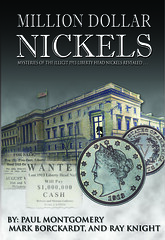 That new show on The Learning Channel, Accidental Fortune is doing a segment on the Walton nickel and it's supposed to air on May 13th. We're pretty excited about it because hopefully it'll increase sales for our book Million Dollar Nickels.
That new show on The Learning Channel, Accidental Fortune is doing a segment on the Walton nickel and it's supposed to air on May 13th. We're pretty excited about it because hopefully it'll increase sales for our book Million Dollar Nickels.
The episode finally aired Wednesday May 19th, and I had the opportunity to watch. The segment was brief, but nicely done. It's one of those reenactment shows. This one focuses on the stories of people who have stumbled across some item of value - I suppose the ideal storyline would be the 25-cent flea market purchase of an original copy of the Declaration of Independence.
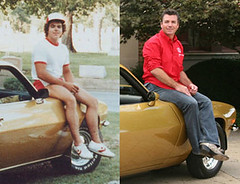 The 1913 Nickel story was just one segment in the hour-long episode. Other stories included an attic find of an original photo of the first professional U.S. baseball team, a rare original photograph by a famous nature photographer, and an old Victorian Rosewood piano in need of restoration. The lead story is one I'd heard about before - the search by Papa John's Pizza founder John Schnatter for his old 1971 Camero. After years of looking, an amateur antique car enthusiast turned out to have it and sold it to Schnatter for the advertised reward of $250,000.
The 1913 Nickel story was just one segment in the hour-long episode. Other stories included an attic find of an original photo of the first professional U.S. baseball team, a rare original photograph by a famous nature photographer, and an old Victorian Rosewood piano in need of restoration. The lead story is one I'd heard about before - the search by Papa John's Pizza founder John Schnatter for his old 1971 Camero. After years of looking, an amateur antique car enthusiast turned out to have it and sold it to Schnatter for the advertised reward of $250,000.
The prop coin was awful - it looked worn down and little like one of the real 1913 Nickels. But it was in a nice Capitol Plastics holder. Despite that minor problem I give the show high marks for presenting the story factually and entertainingly. They squeezed a lot into a short period of time - George Walton and his nickel, his death in a car crash, the declaration of the coin as a fake, it's storage in a Roanoake, VA closet for decades, the family's suspicion that it might be real after all (and their desire to "clear Uncle George's name"), the 2003 ANA convention, the publicity stunt "$10,000 reward", and ultimately the declaration that the coin is genuine after all, and likely worth $6M+. Whew. How DID they squeeze that all in?
The episode said nothing about the creation of the nickels, another fascinating story, but that's why people should read the book. It's a great read and among my favorite numismatic books. Maybe someone could be convinced to make a TV movie based on it.
Mark Borckardt writes:
Everything that was presented was very well done. I thought maybe the “6 to 10 million” dollar coin might have gotten a little more air time than the $60K photo or the $30K piano, but they were neat stories, too.

Above is a photo of George Walton's nephew Ryan Givens holding the prop coin with attorney Patrick Moore. For more background, see the CoinLink article below.
To read the complete article, see:
Walton 1913 Liberty Nickel stars in TV show “Accidental Fortune” on The Learning Channel
(www.coinlink.com/News/us-coins/walton-1913-liberty
-nickel-stars-in-tv-show-accidental-fortune-on-the-learning-channel/)
To see part of the show on YouTube (the Baseball photo) segment, see: Crawl space find yields "Accidental Fortune" (www.youtube.com/watch?v=rtvrUzV6FgE)
NOTES FROM E-SYLUM READERS: MAY 23, 2010
Tom DeLorey writes:
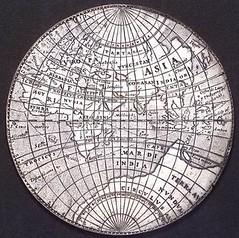 As to the Mercator silver map medal, the Field Museum of Natural History here in Chicago included one in a wonderful exhibit of historical maps a couple of years ago. Their website credits the Beinecke Rare Book & Manuscript Library of Yale for the loan.
As to the Mercator silver map medal, the Field Museum of Natural History here in Chicago included one in a wonderful exhibit of historical maps a couple of years ago. Their website credits the Beinecke Rare Book & Manuscript Library of Yale for the loan.
I am not in a position to say if it was an original or an early copy. I can only vouchsafe that I was impressed by it. The exhibit notes credit it to 1581.
Eagle-eyed Georges Depeyrot writes:
In the last issue, there is a small problem with the photo of the Macedonia coin hoard. It seems that the journalist used a hoard from the UK to illustrate a story.
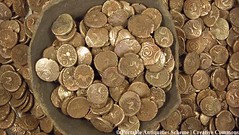
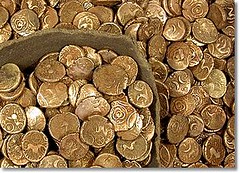
The "Macedonian" hoard. The Suffolk hoard
Bob Leonard spotted this, too. He writes:
The illustration accompanying this story is of an ancient Celtic gold coin hoard from Britain, as the "Copyright Portable Antiquities Scheme" cutline suggests. So these coins are not Byzantine and they were not found in Macedonia. (The original story is unillustrated.)
It appears from this story that the 13th-century Byzantine coins in the hoard were gold, while the Venetian coins were silver (the Venetian gold ducat was not placed in circulation until 1285, late in the century), though one has to read to the penultimate paragraph for this to be clear. Despite the descriptions in the article, both series have very similar designs, with ruler and saint on one side and Christ or the Virgin on the other.
To read the earlier E-Sylum article, see: LARGEST BYZANTINE COIN HOARD UNCOVERED IN MACEDONIA (www.coinbooks.org/esylum_v13n20a33.html)
Regarding the resolution of Galena, IL against removing U.S. Grant from the $50 bill, Jeff Starck of Sidney, OH writes:
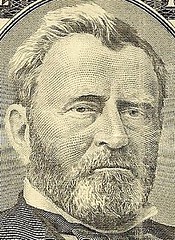 Folks in Galena may stake their claim to U.S. Grant, noting his pre-Civil War residency in that town.
However, the St. Louis area has just as much a claim to Grant, if not more so, than Galena.
Folks in Galena may stake their claim to U.S. Grant, noting his pre-Civil War residency in that town.
However, the St. Louis area has just as much a claim to Grant, if not more so, than Galena.
During the 1850s, Grant lived at White Haven with wife Julia Dent Grant, the estate being of the Dent family. These were hard times for the Grants, and ultimately after about six tough years in St. Louis, the Grants moved to Galena in 1860.
http://www.nps.gov/ulsg/historyculture/jdgrant.htm
http://www.pbs.org/wgbh/amex/grant/timeline/index.html
To read the earlier E-Sylum article, see: HOMETOWN OF U.S. GRANT LOBBIES TO KEEP HIM ON $50 BILL (www.coinbooks.org/esylum_v13n20a32.html)
Leon Saryan writes:
I think NGC is being a bit disingenuous about their ability to penetrate surface plating on a coin using XRF. If I understand their method correctly, it is totally non destructive but does not tell us about the alloy composition of the interior of the coin. Their method will provide an analysis of the surface layer only, perhaps only a few atoms deep at most.
To read the earlier E-Sylum article, see: NGC LAUNCHES NEW METALLURGIC ANALYSIS SERVICE (www.coinbooks.org/esylum_v13n20a36.html)
Leon adds:
I too recall the "Dorian Gray" episode where he pulls out the coin cabinet and studies each piece intently. It is perhaps unique in cinema to see numismatic activity portrayed in such a fashion.
To read the earlier E-Sylum article, see: THE PICTURE OF DORIAN GRAY, NUMISMATIST (www.coinbooks.org/esylum_v13n20a27.html)
MORE ON GEORGE W. RODE
Many thanks to John Mutch and Steve Tompkins who dug up some Rode family biographical data for me. It seems the "W" stands for William. Included were the names and birthdates of Rode's two children, but they were born in the early 1880s, 130 years and several generations ago. I'm not sure how fruitful it would be trying to track down descendants - there could be 50-100 of them living today.
Thanks also to Mike Paradis for tracking down some numismatic literature auction references to books from Rode's library.
The American Numismatic Society obituary for Rode (kindly furnished by librarian Elizabeth Hahn) provided me a clue for a possible photo. It said "Mr. Rode was born in July, 1858, and at the age of fifteen entered the Pittsburg office of the Mutual Life Insurance Company of New York, where he rapidly rose to the position of cashier, which he held up to the time of his death."
Nowadays the title "Cashier" brings to mind a low-paid store clerk, but in the nineteenth century the cashier was more typically a senior manager. The cashier of a bank had his signature on banknotes along with the President. So I began to wonder - as a longtime manager at the Mutual Life Insurance Company of New York, would his portrait appear in a company history? Many large firms have published their histories, often on a significant anniversary of their founding. I have several bank histories in my own library.
So I checked online, and a history exists: Shepard B. Clough, A Century of American Life Insurance a History of the Mutual Life Insurance Company of New York 1843-1943. In no hurry to schlep to a library, I first checked Google Books and managed to find an online copy. I searched it, but found no hits on Rode's name. Only a review of the full book itself would confirm that, but perhaps branch offices weren't covered.
The visit to Google Books did turn up one other reference, though, so it wasn't a wasted effort. In an article about the Pittsburgh office of Mutual Life, the August 7, 1901 issue of The Insurance Press newspaper described him as follows:
"Cashier George W. Rode is a hard worker and a very valuable man for the place. He has been with the western Pennsylvania agency nearly thirty years and is deservedly popular."
Rode corresponded with many of the top coin dealers of the day. A postcard from Philadelphia dealer S.K. Harzfeld promotes his "Old Coins and Their Values" guide, for sale at 25 cents. It looks as if Harzfeld cut out his ad from some other publication and pasted it on a blank postcard. Just curious: does anyone out there have a copy of this publication?
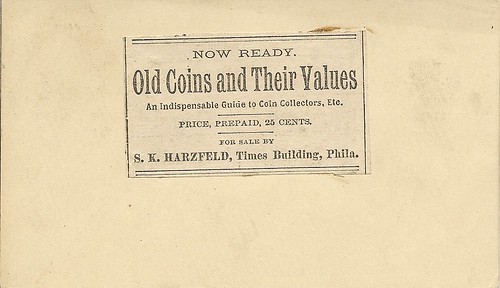
I'm still searching for a photo of Rode. Could he be among the crowd pictured at an early ANA convention? What is the earliest known convention photo?
To read the earlier E-Sylum article, see: QUERY: ANA PIONEER GEORGE W. RODE (www.coinbooks.org/esylum_v13n20a24.html)
THE BOOK BAZARRE
SOCIETY OF MEDALISTS MEDALS OFFERED


SPEED AND STRENGTH ART MEDAL BY McKENZIE.
SOM #13, 1936. 73mm. .999 Silver. (6.05 oz.) R. Tait McKenzie
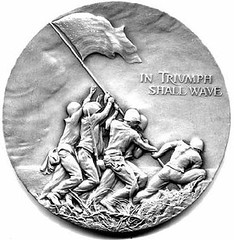
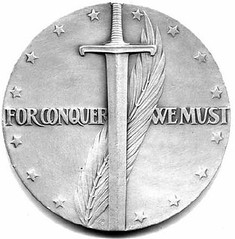
FLAG RAISING AT IWO JIMA MEDAL.
SOM #31, 1945. 73mm. .999 Silver (6.37 oz.) Rene Chambellan, Sc.
To read the catalog, see: www.maineantiquedigest.com/pages/page.php?id=12853
ARTICLE PROFILES ERROR DEALER FRED WEINBERG
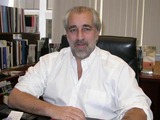 Fred Weinberg is easily one of the most well-known people in coin collecting. He is a specialist in error coins, the coins which result from mistakes and mishaps during the coin minting process. Chances are, if you've seen a handsome, bearded coin expert on television, it was Fred Weinberg, as he is probably one of the most consulted coin experts in the country. He has appeared on numerous TV news and radio shows, from the major networks to local affiliates, explaining the way the coins are made in his engaging and easy-going fashion. So, who is Fred Weinberg and how did he get to where he is today?
Fred Weinberg is easily one of the most well-known people in coin collecting. He is a specialist in error coins, the coins which result from mistakes and mishaps during the coin minting process. Chances are, if you've seen a handsome, bearded coin expert on television, it was Fred Weinberg, as he is probably one of the most consulted coin experts in the country. He has appeared on numerous TV news and radio shows, from the major networks to local affiliates, explaining the way the coins are made in his engaging and easy-going fashion. So, who is Fred Weinberg and how did he get to where he is today?
Fred has been collecting coins since the age of 12. He is fascinated with the things that go wrong when coins are made, and loves trying to figure out why a coin turned out the way it did. As a result of a lifetime analyzing the way coins are struck, Fred is the go-to guy for important entities like PCGS, for which he is the official authenticator for major minting errors.
As a result of Fred's unceasing efforts to learn more and more about how things work at the places where coins are made, Fred has enjoyed tours of official government mint facilities the world over, including several tours of the Shanghai Mint in China. In fact, Fred is one of an exceedingly small number of civilians who have been allowed behind the doors of the U.S. Mint at West Point, an extremely secure facility where the Gold and Platinum U.S. Eagles and other bullion coins are struck.
Of course, to rate a tour of the West Point Mint, one has probably been of assistance to the government in the past. This is evident in Fred's numismatic consulting work. During the famous GSA sales of Morgan Dollars during the 1980's, Fred was the only professional coin dealer who assisted the GSA in checking the Morgan Dollars for varieties! Other government consulting Fred has done includes providing his expertise to the FDIC, the FTC, the U.S. Secret Service, and law enforcement agencies in locations nationwide. He has also consulted on numismatic matters for banks and insurance companies across the U.S. and Europe.
Fred is one of those amazing coin dealers that always seem to have time to help the newbies. The next time you're at a major coin show, stop by his table to say hello and spend a few minutes gawking at his stunning inventory of major mint error coins!
To read the complete article, see: Meet Fred Weinberg - Error Coin and Minting Process Expert (coins.about.com/od/errorcoinsdievarieties/qt/fred_weinberg.htm)
CHINESE COUNTERFEIT COIN DIES, MINTING MACHINERY, AND FAKE COINS

"The photos in this gallery were taken inside a Chinese coin counterfeiting operation. This counterfeiting ring is suspected of putting thousands of fake coins onto the world and U.S. coin markets every month. These striking photos first emerged on certain Web-based coin discussion boards in Europe and the Far East. They came to my attention through a numismatic watchdog/satire blog called Biddle's Bank. These are the same coins which are being put into counterfeit PCGS and NGC coin holders, although they are most frequently sold raw (non-slabbed.) "The sheer size, scope, and professionalism of this counterfeiting ring will astonish you. Although the working conditions often appear dirty and the minting equipment is old, this is obviously a well-funded enterprise that is run like a legal business in China. There is no law in China against making these "replicas" as long as they are sold as such."

Fake Morgan Dollars Made in China
To read the complete article, see: Inside a Chinese Coin Counterfeiting Ring (coins.about.com/od/worldcoins/ig/Chinese-Counterfeiting-Ring/)
REPORT: SEX AND BRIBES IN SECURENCY BANKNOTE DEALS

A RESERVE Bank currency firm was willing to supply prostitutes and pay bribes to win contracts, according to a federal police witness at the centre of Australia's most serious corruption investigation.
The revelation is one of many made by a key witness in the federal police inquiry into the Reserve Bank company, Securency International, which makes polymer banknotes.
The witness has told an investigation by The Age and ABC TV's Four Corners - aired tonight - that a middleman hired by Securency to win contracts from foreign governments told him that he intended to bribe a central bank governor from an Asian country.
The witness, who was a Securency employee, has given the Australian Federal Police his diary in which he recorded the middleman telling him in 2007 that the ''governor would be very happy if the commission [payment] was increased''.
The witness has said that one of the most senior Securency managers told him to arrange an Asian prostitute for a visiting deputy governor of a foreign central bank.
''Next time that this official was in town, [I was told] that I was to procure him a bodyguard, and with raised eyebrows and a wink … a particular type of bodyguard being an Asian woman. He was suggesting I might like to procure a prostitute for one of the central bank officials on his visit to Melbourne,'' said the police witness in an interview with Four Corners. The witness said he did not act on the request although he believed other employees had arranged prostitutes.
In a 2008 diary entry, the witness recorded that a consultant employed in Asia by Australia's overseas trade agency Austrade told him that to win contracts Securency needed to hire someone to bribe officials or ''to pass white envelopes for you''.
Securency is a Melbourne-based polymer banknote company half-owned and supervised by the Reserve Bank. It has employed a network of global agents to help it convince foreign central banks and governments to buy its banknotes.
A federal police taskforce is investigating Securency for allegedly bribing government officials in countries including Nigeria, Malaysia and Vietnam.
To read the complete article, see: Sex, bribes in banknote deals (www.smh.com.au/business/sex-bribes-in-banknote-deals-20100523-w3yx.html)
THE BOOK BAZARRE
JACOBS PERKINS PRINTING AND ENGRAVING BUILDING OPENED
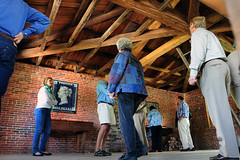 Isabella was one of more than 100 history lovers in attendance at Saturday's premiere of the historic Jacobs Perkins Printing and Engraving building on Fruit Street. The Historical Society of Old Newbury, Cushing House Museum, held a ribbon-cutting ceremony to celebrate the purchase and first phase of restoration of the building, followed by tours and a reception.
Isabella was one of more than 100 history lovers in attendance at Saturday's premiere of the historic Jacobs Perkins Printing and Engraving building on Fruit Street. The Historical Society of Old Newbury, Cushing House Museum, held a ribbon-cutting ceremony to celebrate the purchase and first phase of restoration of the building, followed by tours and a reception.
"You think you've got the history already gathered," Isabella said. "It's another layer of history."
The ceremony honored all those who donated, including a $200,000 grant from the Newburyport Five Cents Savings Bank and a $184,500 grant from the Community Preservation Act. Special thanks were also given to James Lagoulis, the previous owner of the building, who decided against turning the historic mint into condominiums.
"This building is not rare, it's unique," said Jay Williamson, the Historical Society of Old Newbury curator, to the crowd. "It's the only one, the only one in the country. We are so proud to have it."
The mint stands roughly 30 feet high and has an area of 1,875 square feet. The contractors used 6,000 antique bricks and bought beams from Nor'East Architectural Antiques in South Hampton. A Marlboro Street resident donated all of the 1800s-style glass.
"It's just an honor to be a part of it, to follow in the craftsman's footsteps," said Steven MacDonald, one of the contractors.
After the satin green ribbon was cut, event-goers were invited to explore all three floors of the partially furnished mint. On the first floor a plaque detailing Perkins' accomplishments hung on the wall, and visitors could see the original back doors used to keep out thieves. The second floor featured some Perkins' bills and pictures of his inventions, as well as books on the moneymaking process. On the third floor, attendees could look at cases of contemporary engraving tools, and a life-size cutout of the legendary Lord Timothy Dexter, one of Newburyport's most colorful and eccentric 18th century merchants, was propped up against the wall.
Peggy Ghiloni and her husband, who is a coin collector, made the one-hour trip from their home in Londonderry N.H., just for the event.
"These are fantastic examples of Perkins' work," said Ghiloni as she stared in awe at the case of 200-year-old bills.
"They've done an excellent job restoring this," said her husband, Joseph, who owns some Perkins' money. "It's hard to believe that all the people in that picture over there were probably standing here on this floor."
To read the complete article, see: Port's historic mint restored, reopened (www.newburyportnews.com/local/x1414103210/We-are-so-proud-to-have-it)
Dick Hanscom adds:
After coins, I like maps. I don't collect them, but I do like to look at them. I remember when in elementary school, we had large wall maps. And one of the maps I remember was “Goode's Projection.” I have been looking for a large, Goode's Projection world map for several years for a wood working project. It will be a template for routing, so condition is not an issue. Can anyone out there help?
BRITISH LIBRARY TO DIGITIZE THREE CENTURIES OF NEWSPAPERS
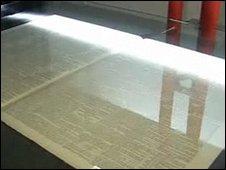 The British Library has announced a 10-year project to make 40m pages from its newspaper archive available online.
The British Library has announced a 10-year project to make 40m pages from its newspaper archive available online.
The record of more than 300 years of journalism, including coverage of the Crimean and Boer Wars, will be put on the web by the publisher BrightSolid.
The move will spare historians having to search the current hard copy and microfilm collection.
The digital material will be made free to users at the main library site at St Pancras, north London.
A charge will be levied for searches conducted from outside the library.
The British Library's archive contains about 750m newspaper pages, including 52,000 local, regional, national and international titles.
Lynne Brindley, chief executive of the British Library, said: "Historic newspapers are an invaluable resource for historians, researchers, genealogists, students and many others, bringing past events and people to life with great immediacy and in rich detail.
"By making these pages fully searchable we will transform a research process which previously relied on scrolling through page after page of microfilm or print.
"It will help the newspaper collection to remain relevant for a new generation of researchers, more used to accessing research information via their laptop than travelling to a physical location."
To read the complete article, see: British Library to digitise 40m of its newspaper pages (news.bbc.co.uk/2/hi/uk_news/england/london/8690919.stm)
FEATURED WEB SITE: FAKE ANCIENT COIN REPORTS
This week's Featured Web Site is Dr. Ilya Prokopov's Fake Ancient Coin Reports - Forum Ancient Coins' Services for the Classical Numismatics Community. I discovered this site through Ken Peters' bibliography of the Counterfeit Coins of England (see the book review in this E-Sylum issue).
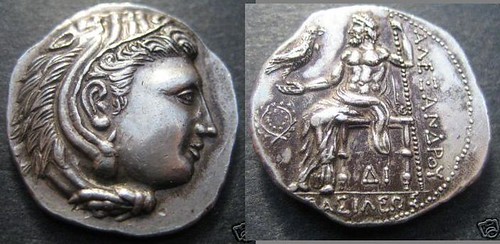
Alexander the Great, Alexander III, silver tetradrachm
AR tetradrachm, Susa?
Wreath in left field and DI under throne appear at Susa mint only, but with additional objects in left field. Style is completely wrong for official issue as well as for a Celtic imitation.
Sold in German Ebay in Oct. 2005 for 118€.
www.forumancientcoins.com/fakes/

